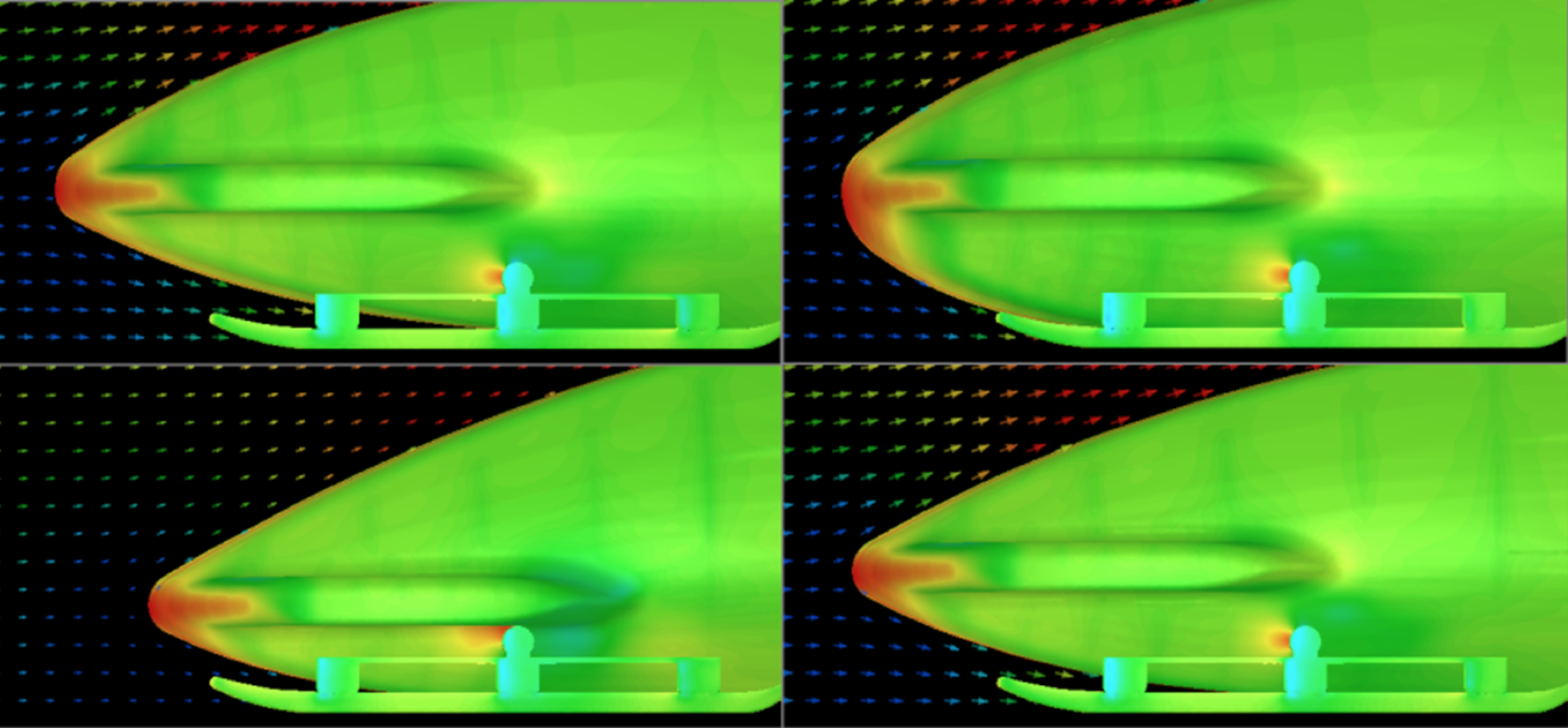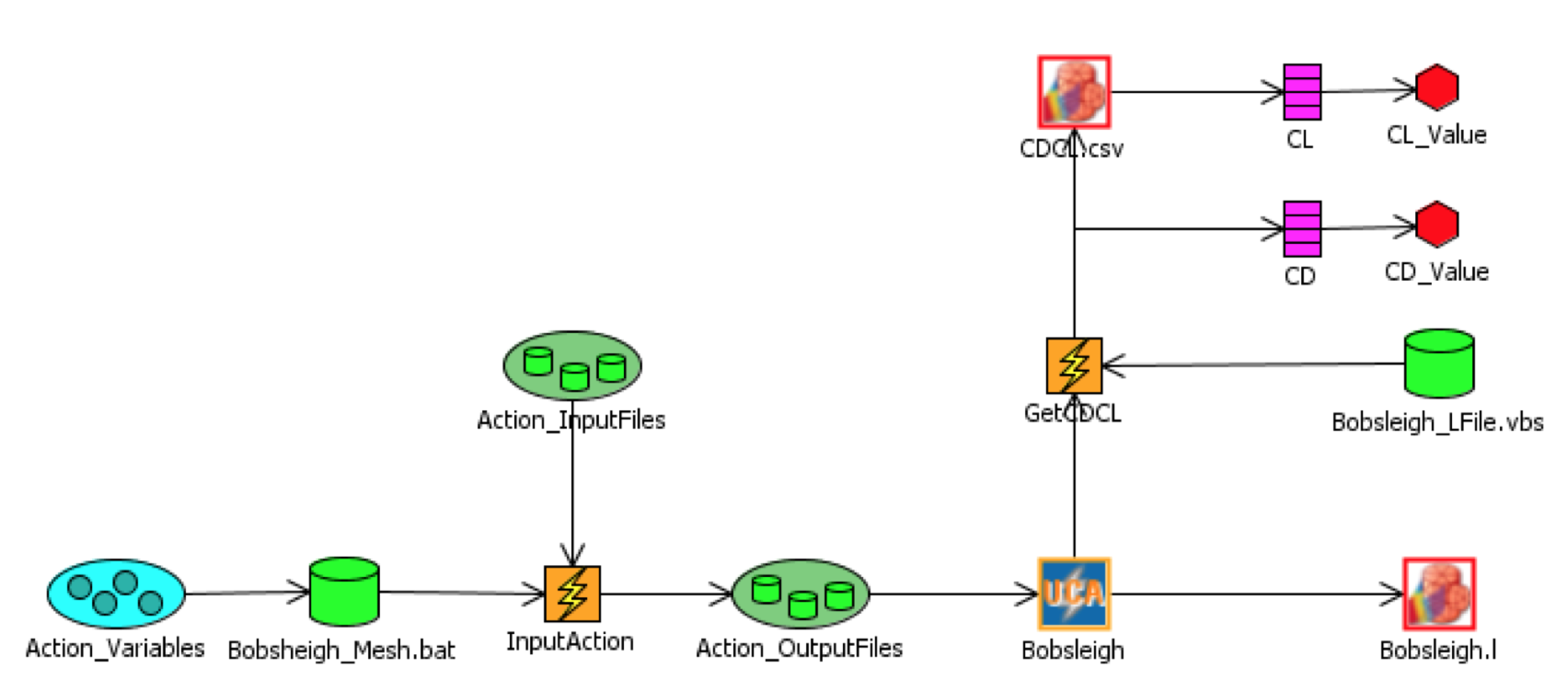Sliding faster to the finish
A free case study on aerodynamics optimization of a bobsleigh
OPTIMIZING BOBSLEIGH AERODYNAMICS IN A MATTER OF MINUTES
Racing faster down narrow twisting iced tracks
Optimizing bobsleigh aerodynamics is critical in racing faster down narrow twisting iced tracks. The Shitamachi bobsleigh project is an engineering collaboration between Tokyo University and 40 design & manufacturing companies in the Tokyo region. The team of engineers first modeled a two-man bobsleigh design in CATIA, and used SC/Tetra to perform a CFD analysis. Then, Optimus for Cradle managed an automated engineering simulation process – driving CATIA modeling & SC/Tetra CFD simulation to identify optimized bobsleigh design configurations.

Exploring the bobsleigh design space
The development team used Optimus for Cradle to explore the design space and optimize bobsleigh shape and CFD performance. They first modeled the bobsleigh in CATIA V5, and set up the detailed aerodynamics model in SC/Tetra. They then started an automated Design of Experiments (DOE) campaign involving both CATIA and SC/Tetra, using the outcome of the representative set of virtual experiments as a basis to create a reliable bobsleigh response surface model (RSM).

The Shitamachi bobsleigh project shows that Optimus for Cradle enables a seamless multi-objective engineering optimization workflow.
Bobsleigh aerodynamic drag cut by 6%
The Shitamachi bobsleigh project shows that Optimus for Cradle enables a seamless multi-objective engineering optimization workflow. The automated process includes intelligent bobsleigh shape modifications in CAD, simulation & optimization.

To find out more, download your copy!
Download your copy »©2025 Noesis Solutions • Use of this website is subject to our legal disclaimer
Cookie policy • Cookie Settings • Privacy Notice • Design & Development by Zenjoy